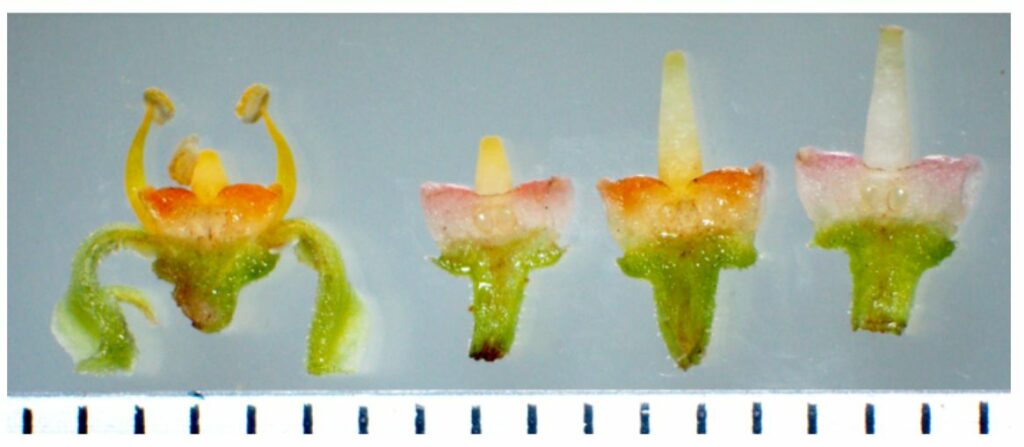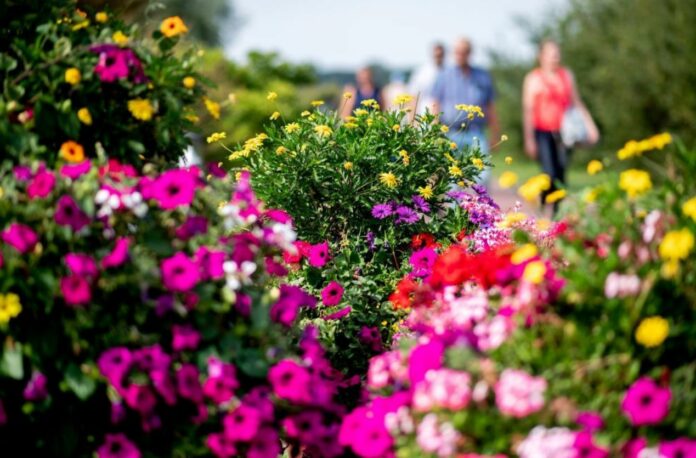Did you know that some flowers can change their colors?
We all like flowers, and one of the best things about them is probably that they come in so many different shapes, sizes, and colors.
But did you know that some flowers have the ability to change color?
Although not all flowers exhibit this property, it has been seen in hundreds of distinct species over at least many decades. It is believed that flowers that change color do so to let pollination insects know that they may expect nectar or pollen rewards in the form of the bloom.
This signal is seen as being “honest.” But the opposite is also true. Some plants send a “dishonest” signal, with some of their flowers showing their default color and others showing their signal color.
This activity is believed to boost the plant’s visibility to potential pollinators from a distance.
Whatever the plant’s technique, all instances of color-changing flowers discovered have been unidirectional: once the color has changed, it does not change back.
So, you can imagine how surprised Professor Hirokazu Tsukaya of the University of Tokyo must have been when he saw a Causonis japonica flower change color, then change again, and again.
“Even though I’ve studied this plant in detail, having discovered there were at least two varieties back in 2000, the bidirectional color-changing flowers were a completely unexpected finding,” adds Tsukaya. “My colleague Professor Nobumitsu Kawakubo from Gifu University is an expert in time-lapse, long-period video recordings of pollinating flowers. He and his student originally tried to explore the pollinating behaviors between the different kinds of Causonis japonica and expected to see the familiar change from its default orange color to bright pink. But they couldn’t believe it when they reviewed the time-lapse video and saw that it not only changed back to orange again, but that this change oscillated between the two states. They informed me on this finding; this compelled us to find out why. So we started a collaboration.”
Tsukaya was able to figure out what physiological changes happened in the flowers at the same time that their colors changed because of the time-lapse videos he took in the field and the careful observations he made in the lab.

“The initial orange state is coincident with the male stage of the flower’s maturation, when it is secreting nectar,” exoplains Tsukaya. “When the stamen — male part — becomes old and detaches, the flowers turn pink. Mere hours later, the pistil — female part — begins to mature, secretes nectar, and the flower turns orange again. Once that stage is over, the flower fades to pink. The main chemical responsible for the color changing is orange-yellow carotenoid; its cycle of accumulation and degradation is also the fastest known to date. That fact was another surprise to us.”
You may have noticed that the word “carotenoid” sounds a bit like “carrot.” It’s not a coincidence, because the same chemical gives carrots their orange color.
It’s a rich source of vitamin A, and because the color-changing flowers display the fastest accumulation of carotenoids ever recorded, the researchers hope their finding may help design carotenoid-containing foods that grow quicker or provide more vitamins.
“Our next steps will be to find out what is governing the behaviors we have observed,” adds Tsukaya. “One big question we have is, at what level are the stages of the cycles regulated? Is it caused by proteins caught in a feedback cycle, or does something occur on a genetic level? We will continue to explore this and hope to find an explanation soon. It’s strange to think that several hundred years ago, agriculturalists in Japan hated Causonis japonica because of its vigorous nature. But a novelist, Kyoka Izumi, wrote about them so favorably, I wonder if it helped maintain some interest in preserving them. Whatever the reason, I’m glad they are around now to share their secrets with us. I wonder what we’ll discover next.”
The findings were published in the journal Nature Today.
Image Credit: Hauke-Christian Dittrich/picture alliance via Getty Images
